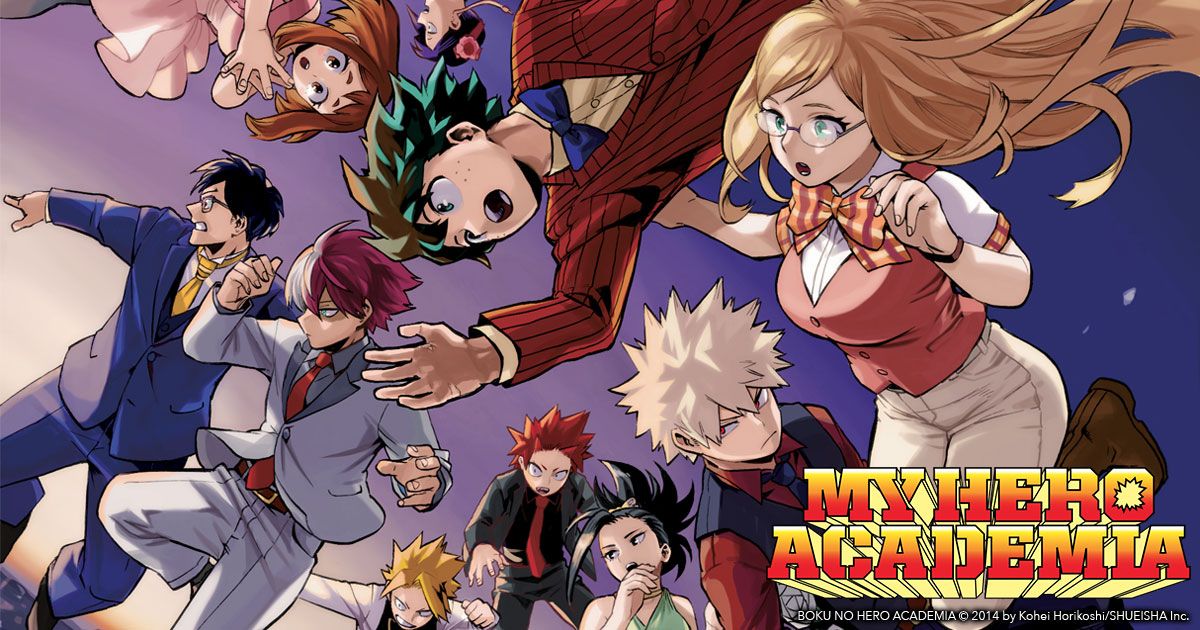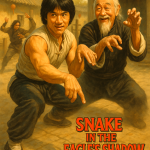My Hero Academia: All Might Rising (2019)

My Hero Academia: All Might Rising (2019) is a brief yet emotionally charged original video animation (OVA) that serves as a prequel to the first My Hero Academia movie, Two Heroes. Released on February 13, 2019, alongside the Blu-ray and DVD editions of the film, this two-minute special adapts a one-shot manga by Kōhei Horikoshi, the creator of the My Hero Academia universe. The OVA dives into the tragic origins of Toshinori Yagi, better known to fans as All Might, the towering Symbol of Peace who defines heroism in this beloved shonen franchise. Directed by Kenji Nagasaki and produced by Studio Bones—the team behind the main anime series—it’s a compact but powerful addition to the My Hero Academia lore, offering fans a deeper, more intimate look at the formative years of the world’s greatest hero.
A Pivotal Moment in All Might’s Journey
The story of All Might Rising unfolds during a fateful and heart-wrenching battle that shapes Toshinori’s destiny. At its center is Nana Shimura, All Might’s mentor and the seventh wielder of the One For All quirk, locked in a desperate struggle against the series’ ultimate villain, All For One. This confrontation is no mere skirmish—it’s a clash of ideologies, a battle between the selfless heroism Nana embodies and the ruthless domination All For One seeks to impose. As the fight escalates, the stakes become unbearably personal. Nana, fully aware of her impending doom, makes the ultimate sacrifice to protect her young pupil, Toshinori, shoving him out of harm’s way just as the situation turns dire.
The scene is a masterclass in emotional storytelling, even within its limited runtime. Nana’s final moments are depicted with a raw intensity that lingers long after the credits roll. As Gran Torino, her longtime ally and a fellow hero, swoops in to whisk Toshinori to safety, the young man’s anguished cries pierce the chaos. Nana, bloodied but resolute, turns to him with a bittersweet smile, pointing toward him as if to say, “You are the future.” With her last breath, she entrusts him with her legacy, urging him to rise up and save the world. Moments later, the island where this cataclysmic battle unfolds erupts in a devastating explosion, marking the end of Nana’s heroic stand and leaving Toshinori shattered by grief.
This pivotal moment is the emotional cornerstone of All Might Rising. It’s not just the loss of a mentor that breaks Toshinori—it’s the weight of her belief in him, the unspoken promise that he must carry forward her ideals. The OVA captures this beautifully, framing Nana’s sacrifice as the spark that ignites Toshinori’s resolve. From the ashes of this tragedy, the Symbol of Peace begins to take shape, a hero forged not just by power but by the pain of those who came before him.
Training Under Gran Torino: A Hero in the Making
The narrative then fast-forwards to a critical phase of Toshinori’s development: his training under Gran Torino, the grizzled veteran who becomes his new mentor. This segment of the OVA shifts the tone from despair to determination, offering a glimpse of how Toshinori transforms his grief into strength. In a rain-soaked sparring session, Gran Torino doesn’t hold back, delivering tough love with every punch and word. He drills into Toshinori a harsh but necessary truth: Nana’s sacrifice will mean nothing if he fails to escape All For One’s grasp and master the power of One For All.
This training sequence, though brief, is rich with subtext. The rain mirrors Toshinori’s inner turmoil, a visual metaphor for the storm of emotions he’s wrestling with. His declaration that Nana was like a mother to him—a raw, unfiltered confession—lays bare the depth of their bond. For fans familiar with the main series, this line hits especially hard, as it contextualizes All Might’s unwavering optimism and paternal demeanor toward his own protégé, Izuku Midoriya (Deku). Nana wasn’t just a teacher; she was family, and her loss cuts Toshinori to the core.
Gran Torino’s role here is equally compelling. He’s not just a drill sergeant—he’s a bridge between Nana’s legacy and Toshinori’s future. His gruff exterior masks a deep sense of responsibility, a determination to see Nana’s dream live on through her student. The dynamic between the two is understated but powerful, hinting at months—if not years—of grueling preparation that the OVA can only suggest within its tight runtime.
A Hero Rises: From U.A. to America
By the time spring arrives, Toshinori has begun to emerge from the shadow of his loss. The OVA shows him graduating from U.A. High School, the prestigious institution that trains Japan’s future heroes. It’s here that he takes the first steps toward becoming the All Might fans know and love. He styles his iconic, gravity-defying hair—a subtle nod to his larger-than-life persona—and adopts Nana’s signature smile as a tribute to her memory. This transformation isn’t just cosmetic; it’s a declaration of intent, a promise to honor Nana by embodying the hope she stood for.
The OVA concludes with Toshinori boarding a plane to America, a decision that sets the stage for his adventures in Two Heroes. As he gazes out the window, he vows to return and save Japan, his resolve hardened by the trials he’s endured. This moment feels like the dawn of a new era—not just for Toshinori, but for the My Hero Academia universe as a whole. It’s a quiet, reflective beat that contrasts with the explosive action of the opening, yet it carries just as much weight. Toshinori isn’t yet the invincible Symbol of Peace, but the seeds have been planted, and his journey is just beginning.
Production Values: Small Scale, Big Impact
Despite clocking in at just over two minutes, All Might Rising punches above its weight with production values that rival the main series. Studio Bones delivers high-quality animation that captures both the visceral intensity of Nana’s last stand and the quiet poignancy of Toshinori’s growth. The action, while limited, is rendered with haunting detail—every blow Nana takes from All For One feels heavy, every flicker of her fading strength palpable. The explosion that consumes the island is a spectacle in its own right, a fiery punctuation mark on her sacrifice.
Yuki Hayashi’s stirring score elevates the experience further, weaving a thread of melancholy and hope through each frame. The music swells at just the right moments, amplifying the emotional beats without overwhelming them. It’s a testament to Hayashi’s skill that he can craft such a memorable soundtrack for a piece so short, ensuring that every note resonates with the viewer.
The voice acting, too, is a standout. In the Japanese version, Kenta Miyake (All Might) and Kae Ueda (Nana Shimura) bring raw vulnerability to their roles, while Kiyotaka Furushima’s Gran Torino adds a gruff warmth that grounds the story. For English dub fans, Christopher Sabat’s All Might carries the same larger-than-life gravitas, tempered by a youthful uncertainty that fits this younger Toshinori perfectly. The performances breathe life into Horikoshi’s characters, making their pain and perseverance feel achingly real.
Emotional Depth Over Action: Why It Works
All Might Rising isn’t about flashy battles or sprawling narratives—it’s about the quiet, human moments that define a hero. The OVA shines in its emotional depth, fleshing out All Might’s backstory with a reverence that enriches his character arc. Fans of the main series know All Might as the invincible, ever-smiling champion of justice, but this special peels back the layers to reveal the cost of that persona. His cheerful demeanor, we learn, isn’t just a quirk of personality—it’s a shield, a tribute to Nana, and a promise to never let despair win.
This focus on mentorship and loss is what makes All Might Rising so compelling. Nana’s sacrifice parallels the themes of legacy that run through My Hero Academia, particularly in All Might’s relationship with Deku. Just as Nana gave everything to protect Toshinori, he later passes One For All to Deku, perpetuating a cycle of selflessness and hope. The OVA doesn’t spell this out explicitly—its brevity prevents it—but the parallels are clear for attentive viewers, adding a layer of resonance to All Might’s journey.
A Fleeting Gem for Fans
At just over two minutes, All Might Rising is undeniably short, and some fans might wish for a longer exploration of this pivotal chapter in All Might’s life. A full episode—or even a half-hour special—could have delved deeper into his training with Gran Torino, his time at U.A., or the psychological toll of Nana’s death. Yet, the OVA’s brevity is also its strength. It distills Toshinori’s origin into its purest essence, delivering a concentrated dose of emotion and meaning that doesn’t overstay its welcome.
For casual viewers, All Might Rising isn’t essential to understanding the main My Hero Academia series or Two Heroes. It’s a side story, a bonus feature that assumes familiarity with the characters and their world. But for devoted fans, it’s a tear-jerking gem that bridges the manga and anime with reverence. It offers a rare glimpse into All Might’s past, showing how loss and mentorship forged the hero who would one day inspire Deku and countless others.
Setting the Stage for Two Heroes
As a prequel to Two Heroes, All Might Rising serves as the perfect appetizer. The feature film takes place years later, with All Might at the height of his power, teaming up with Deku in America to face a new threat. The OVA provides crucial context for his time abroad, hinting at the experiences that shaped him into the global icon we see in the movie. It’s not a direct setup—Two Heroes stands on its own—but it adds a layer of poignancy to All Might’s American debut, knowing the sacrifices that brought him there.
Final Thoughts
My Hero Academia: All Might Rising is a must-watch for My Hero Academia devotees craving insight into All Might’s past. Its runtime may be fleeting, but its impact is lasting, offering a beautifully crafted snapshot of a hero’s beginnings. It’s a love letter to fans, a tribute to Toshinori Yagi’s resilience, and a reminder of the human heart beating beneath the Symbol of Peace’s larger-than-life exterior. Whether you’re revisiting it after Two Heroes or discovering it for the first time, this OVA is a small but mighty addition to the franchise—one that proves even the briefest stories can leave a mighty mark.











